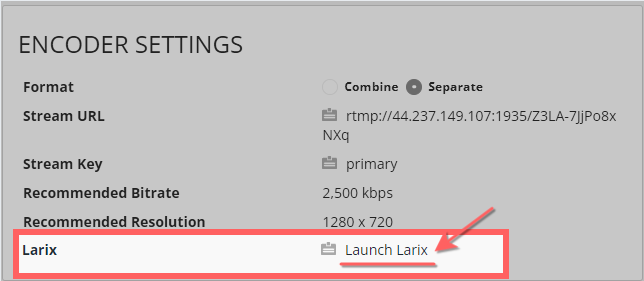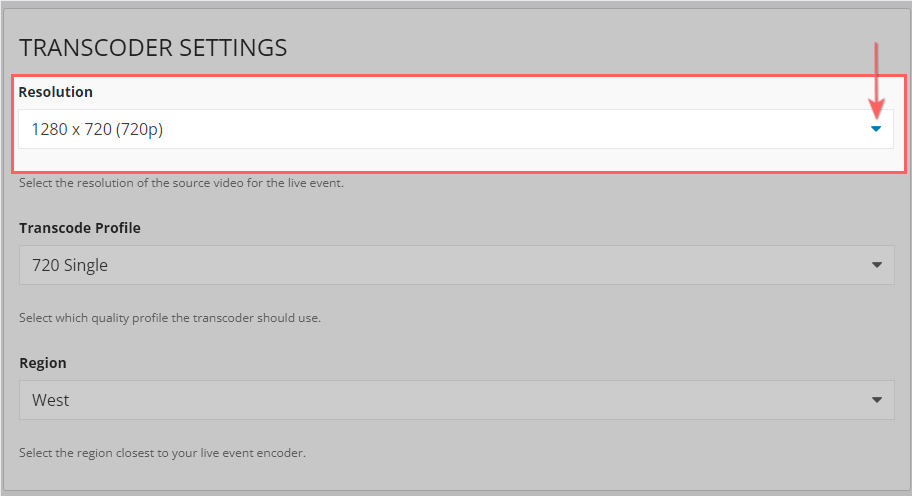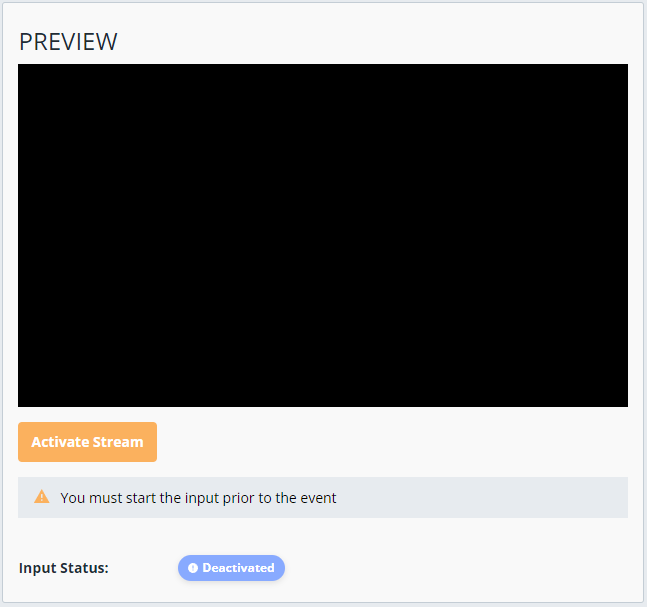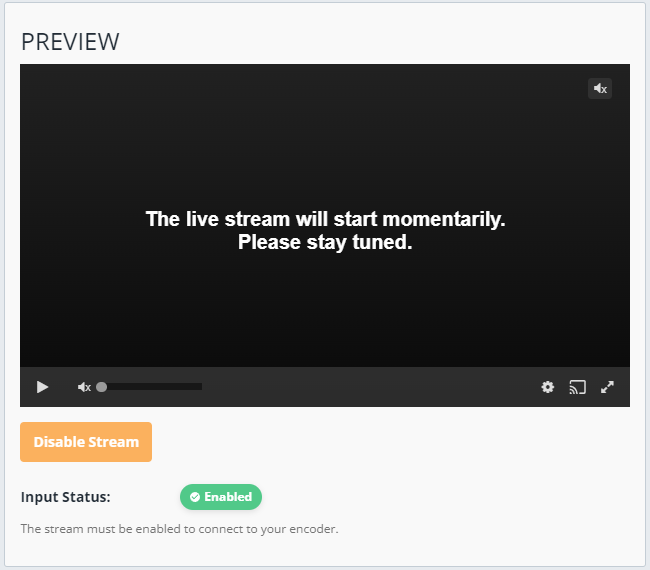Live Event Operator Training - VFLive
Who can use this feature
Live Event Operators
Supported features: Live Events
Before You Begin
Refer to the table below to get familiar with common terms you will read and hear in the training course. Click on a term name to expand the table and read the definition.
The back end is where the Live Event Operator manages the event details (event title, date & time, encoder settings, starting/stopping events).
The front end is where viewers go to pay and watch content.
A Live Event container, aka a container, has all the information for that unique event. Each event has its own container.
Software that converts the signal from the camera into a video stream to be sent over the internet. Essentially this turns your phone/table/laptop into a broadcast studio.
A transcoder receives the video steam from the Encoder and displays it on the event page of the Vidflex site.
Same as television monitors. 720: HD, 1080: true HD, the bigger the number the bigger the screen. Affects Bandwidth.
This is how much of the video gets sent each second. Higher bitrate numbers mean better quality video is sent. Affects Bandwidth.
The amount of signal available to connect to the internet. A wired connection is always preferable but WiFi or Cellular usually works just fine. A combination of Resolution and Bitrate is what determines the amount of bandwidth required.
The default settings of the Vidflex platform are what we’ve found to provide a good balance between internet usage and quality of image on playback.
A test that measures the available internet bandwidth. Use the ‘Upload Speed’ number to help you find the best Encoder and Transcoder Settings. We recommend www.speedtest.net
Meaning: Digital Video Recording. Every live event container has its DVR setting enabled by default. After a live stream is over the 'DVR' becomes instantaneously available for viewing on-demand.
The "Start Input & Test" button on a live event dashboard fires up the transcoder for a live event container and is required before sending a stream from a live stream encoder.
Getting Started
Complete all the steps in order before moving on to the next section. We recommend having the steps below, in front of you on another monitor or device to read and/or follow along with the video tutorial on this page.
Estimated time to complete course: 30-60 minutes
- Install your preferred encoder software or configure your hardware encoder. Otherwise, download and install one of the free recommendations below:
- Log in to your administrator user account for your video platform
- Now that you have installed your encoder and signed into the event website it's time to learn about how to run the event. Watch the following video 'Live Event Operator Workflow' to get you ready for the next sections.
(Watch time: 10 mins) - [00:00:00] Intro
- [00:00:23] Log-in and find your event
- [00:01:13] Transcoder Settings
- [00:02:02] Start Input & Test
- [00:02:38] If using Larix Broadcaster
- If using Larix Broadcaster reference the screenshot below on importing the encoder settings by clicking the "Launch Larix" link. For more information see Importing Larix Encoder Settings.

- [00:03:01] Copying Encoder Settings
- [00:03:48] Pause Input
- [00:04:24] Advanced Settings: Reset Stream
- [00:04:46] Managing Event Start Time
- [00:06:06] Ending Event
- [00:06:59] Trimming DVR
- [00:07:41] Create Download
- [00:08:11] Replacing the Live Event Source
- [00:09:26] Streaming another live event
- After steps 1-3 are completed, go to the next section below
Attempt Your First Stream
Using your new knowledge from watching the video and going through the article steps, it's time to test what you've learned!
Optional - Use the link below to download our 'LEO Checklist' that can be shared and printed. You may use this checklist to help track your steps in the course, or just save it for future use if you want to.
Run A Speed Test
Go to speedtest.net and note the “upload speed” you get from it. Use the information below as a guideline when deciding your bitrate. As a general rule of thumb you want to have double the amount of upload speed than what is required to act as a buffer.
- If your upload speed is greater than 5 Mbps (5000 Kbps), you can stream a 720p HD resolution with a bitrate of 2500 Kbps
- If your upload speed is greater than 8 Mbps (8000 Kbps), you can stream a 1080p HD resolution with a bitrate of 4000 Kbps
- If your upload speed is less than 4Mbps there is potential for choppy or blurry video. To help prevent this from happening you need to lower the bitrate from your encoder. For more assistance see this help article
(Watch time: 2 mins)
Chapter Markers:- [00:00:09] Run A Speed Test
- [00:00:27] Knowing Your Upload Speed
- [00:01:38] Users with Limited Upload Speed
- Upload speeds do not have to be exact. Try to stay within 500 Kbps to keep it safe
- In most cases we recommend streaming a 720p resolution @ 2500 Kbps for all events
- For users that have limited uploads speeds between 2 to 3 Mbps available, configure your encoder to stream a 720p resolution @ 1500 Kbps
Starting Your Test Stream
On Android it's possible to do all of the following steps with a single device. But, if you are streaming with Larix on an iOS device we recommend having another tablet, phone or laptop nearby to do the verification process in step 8.
(Watch time: 2 mins)
Chapter Markers:
- [00:00:20] Transcoder Settings
- [00:00:25] Site Defaults
- [00:00:43] Changing Resolution
- [00:00:53] Enable/Disable DVR (Digital Video Recording)
- [00:01:09] Changing Region
- [00:01:30] Start Input
- Find your next upcoming Live Event container within the Library, and click on it
Confirm the Transcoder Settings matches the resolution in your live stream encoder (720p or 1080p)

Click “Activate Stream”, and wait up to 5 minutes for it to start

- Wait a few minutes for the Encoder Settings box to appear on the right side of the screen
Skip the Format setting as we want to keep it on its default for Separate

- You're now ready to copy the encoder settings into your encoder. Choose one of the following actions:
If using Larix click on the "Launch Larix" link from the mobile device that has the Larix app installed on it, and follow the prompts

- For OBS users and most other encoders, use the copy to clipboard button next to the Stream URL and Stream Key settings, and paste each one into your encoder's output settings (see video above at the 3:01 minute mark on how to do this on OBS)
Save the settings by clicking 'Apply' and 'OK' if you're encoder has it

- When ready, click the Start Streaming button from your encoder
Go back to the live event container's back end "Stream Settings & Preview" screen to verify you can see your video in the "Preview" player
- Remember, if using Larix on iOS, verify this on another device or else it will disconnect your stream!
- If using Larix on Android, this can be verified on the same device if “background streaming” is enabled in the Larix advanced settings

- When the stream is verified (video & audio) and first test is concluded, click “Disable Stream”
Optional Advanced Encoder Set Up
To get the best possible production value whether you're using a mobile device or on a computer, we recommend going through one or both of the links below. Select the Larix link if you're streaming from mobile, or OBS link if you're streaming from a computer.
Optimizing Larix Broadcaster on mobile devices:
Get a better understanding on how to use Open Broadcaster Software like a pro:
Help
Check out the related articles below for more in-depth steps. Each related article is an expanded version of topics discussed in this Live Event Operator Training course. We recommend starting with "Managing a Live Event {short version}".
If you have any issues completing the steps above, please email: support@vidflex.com






